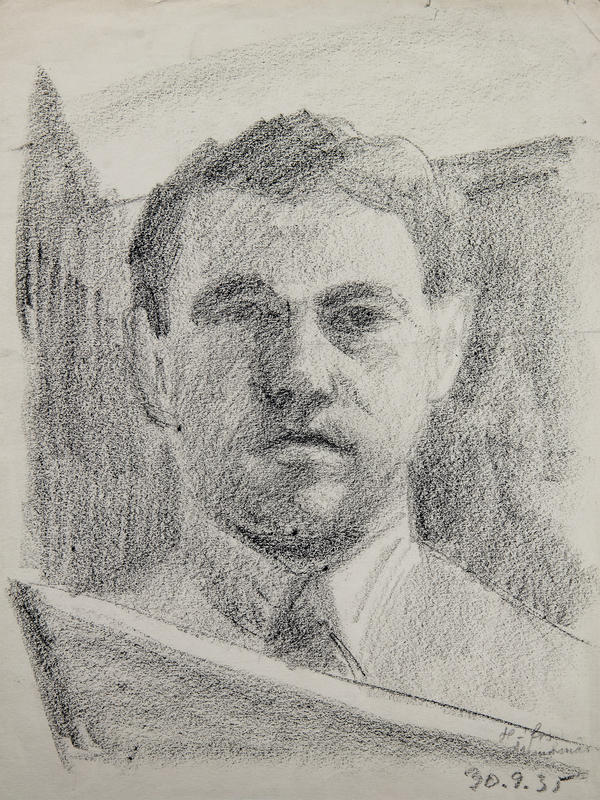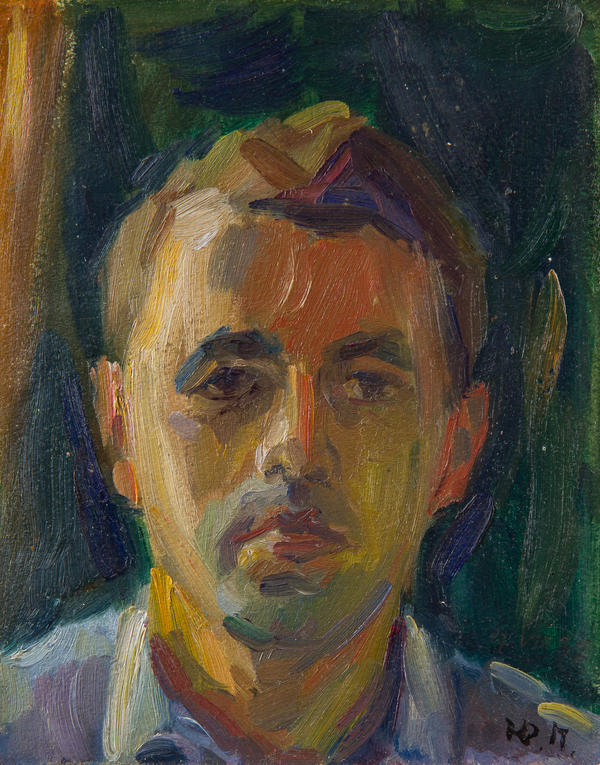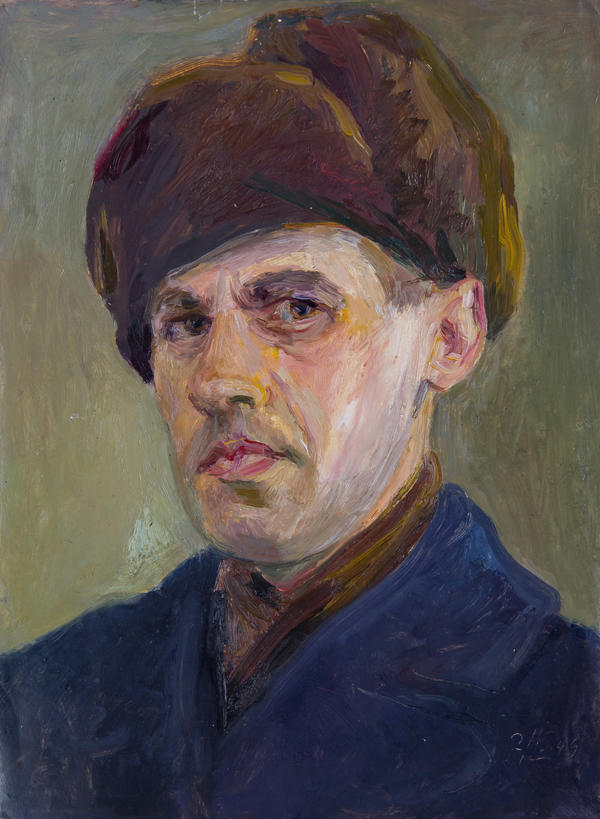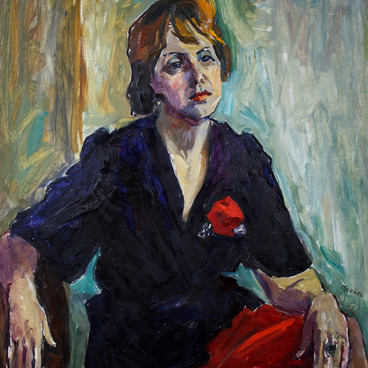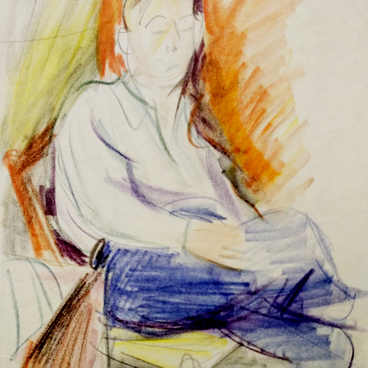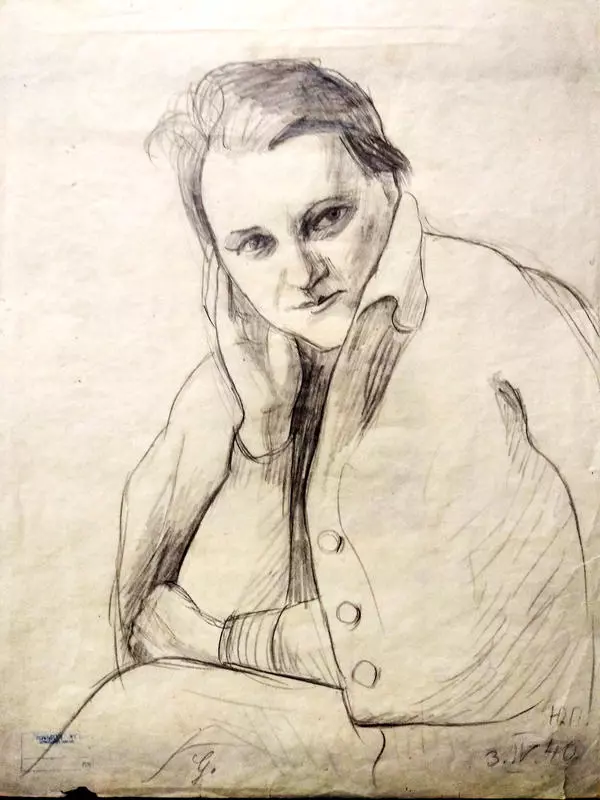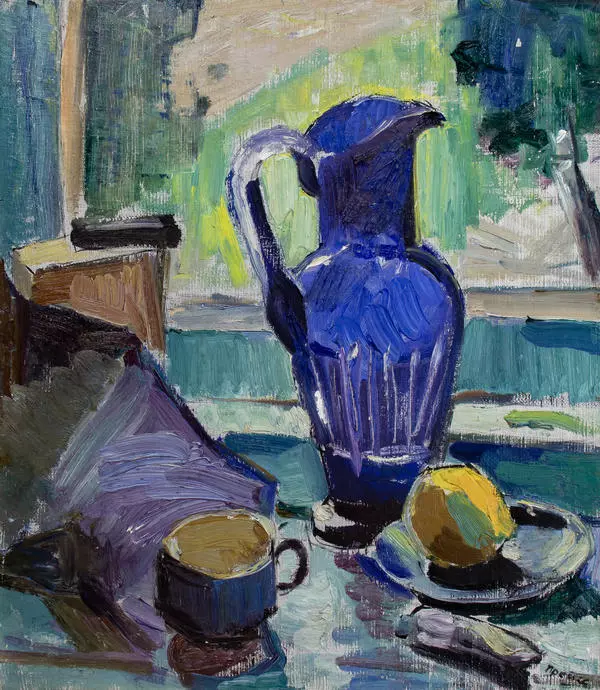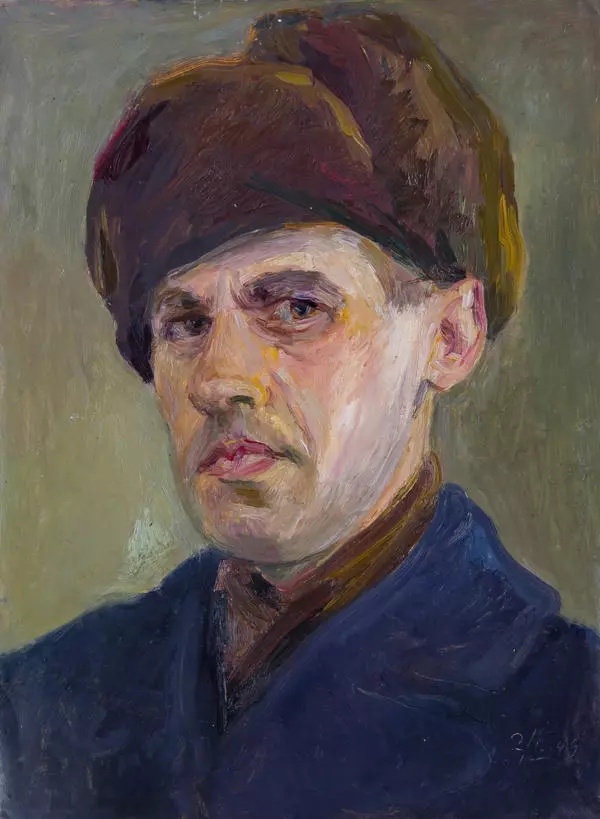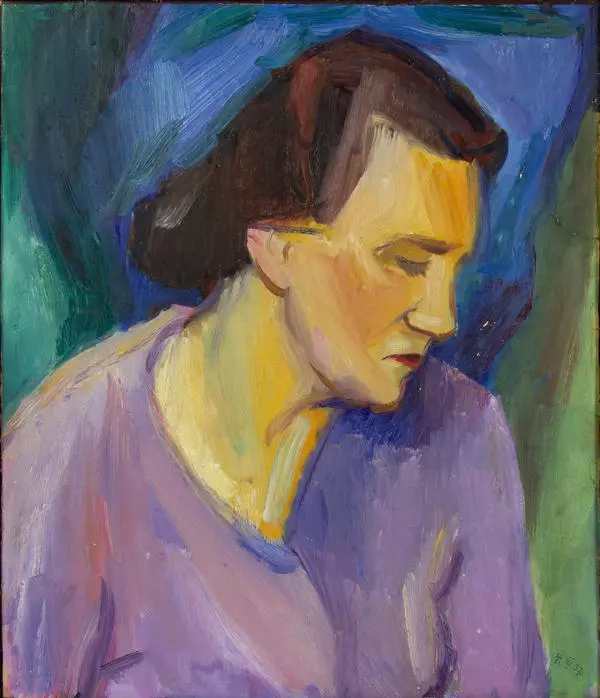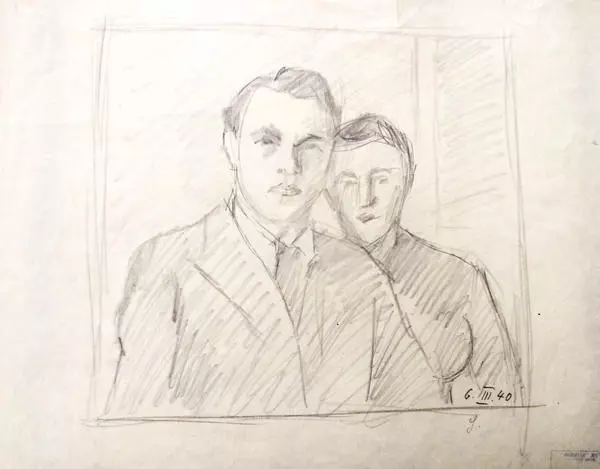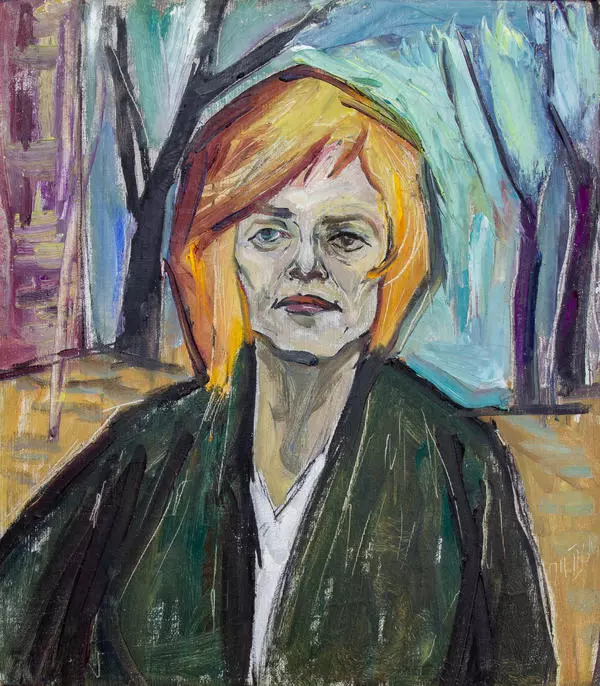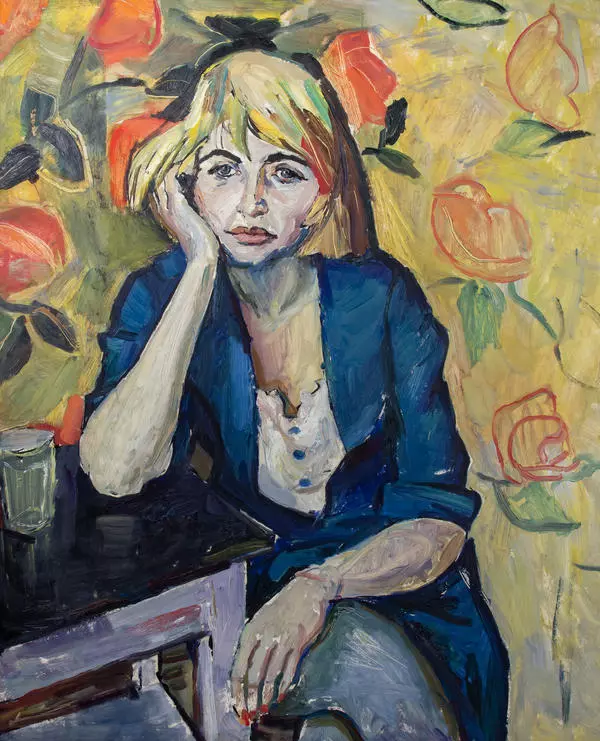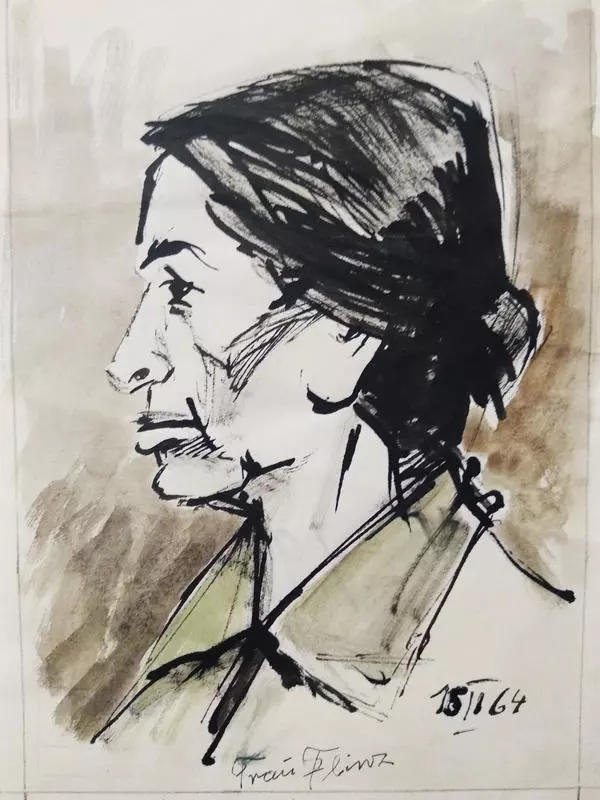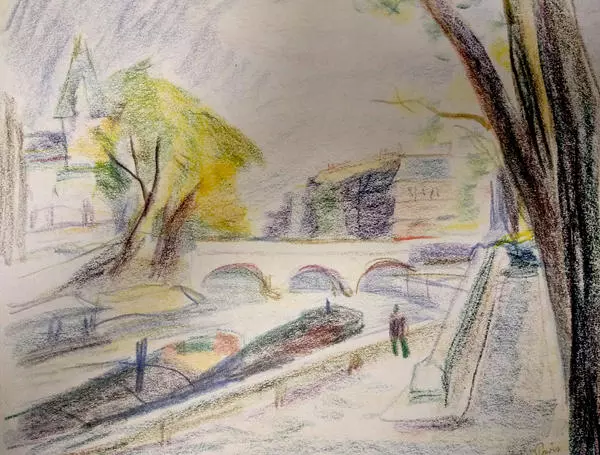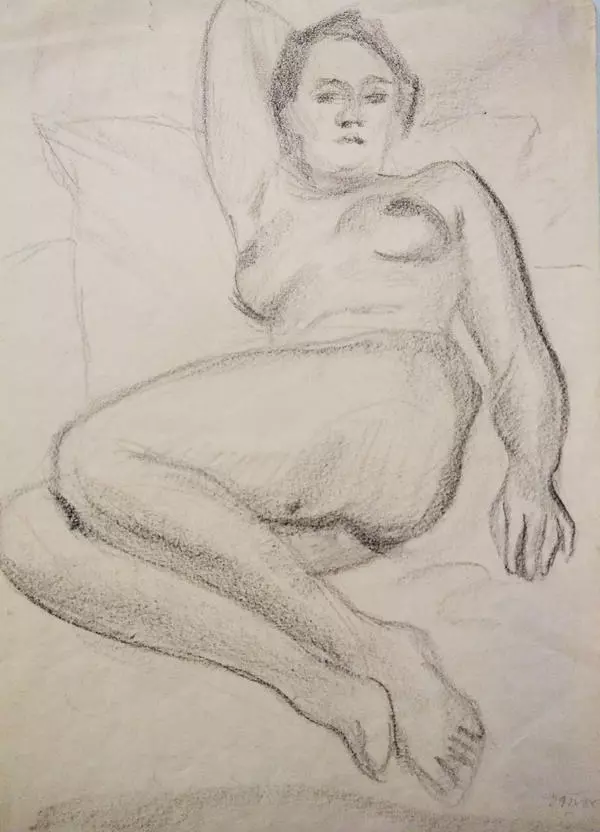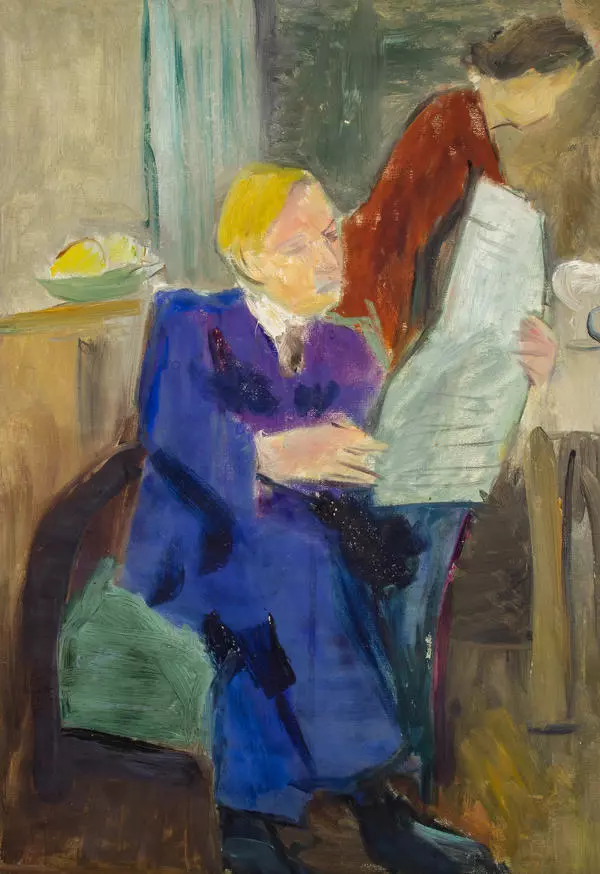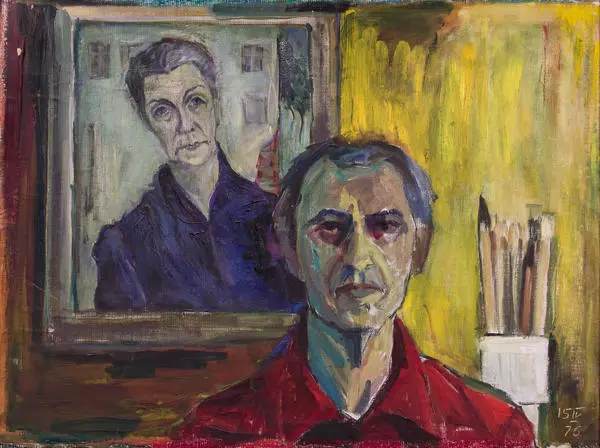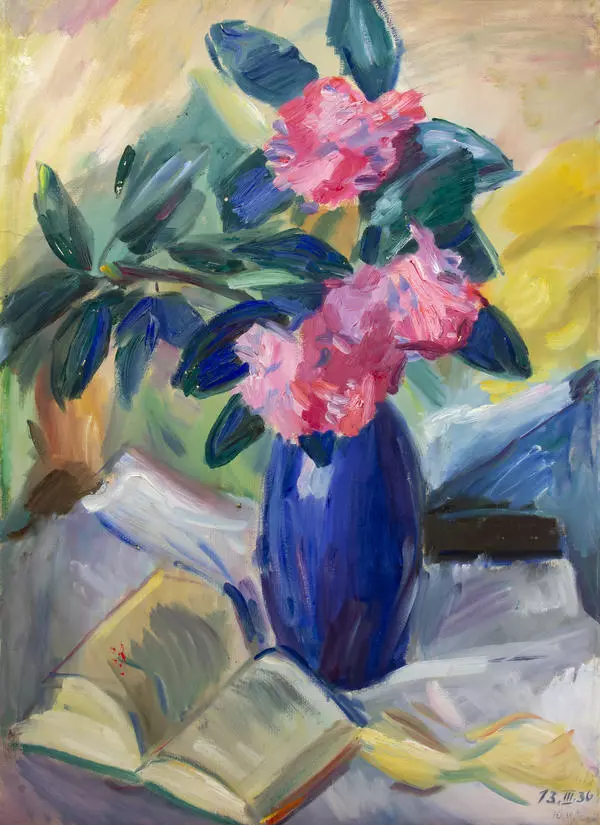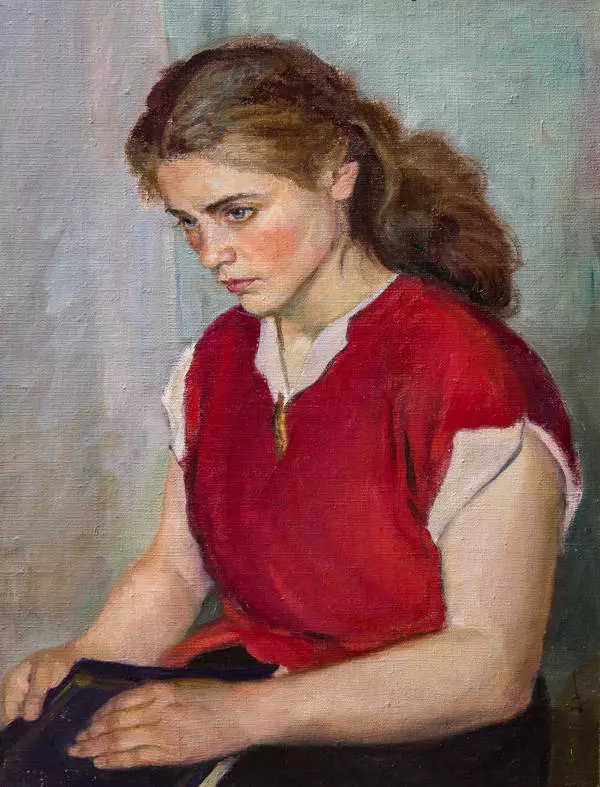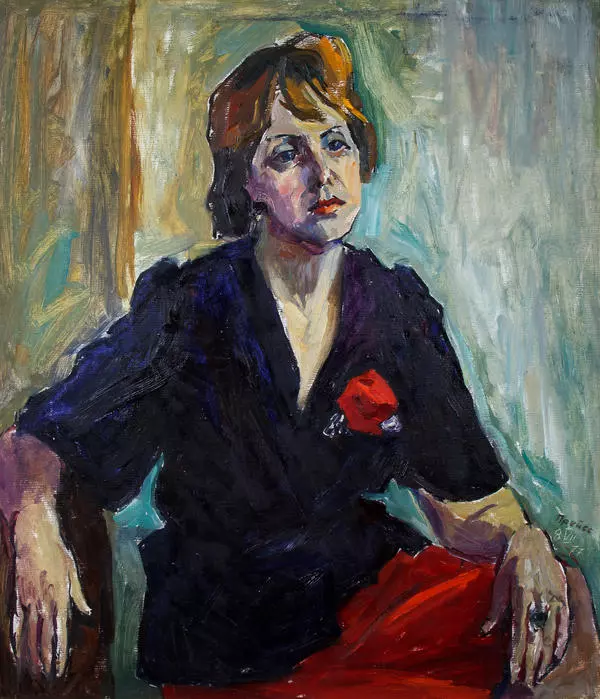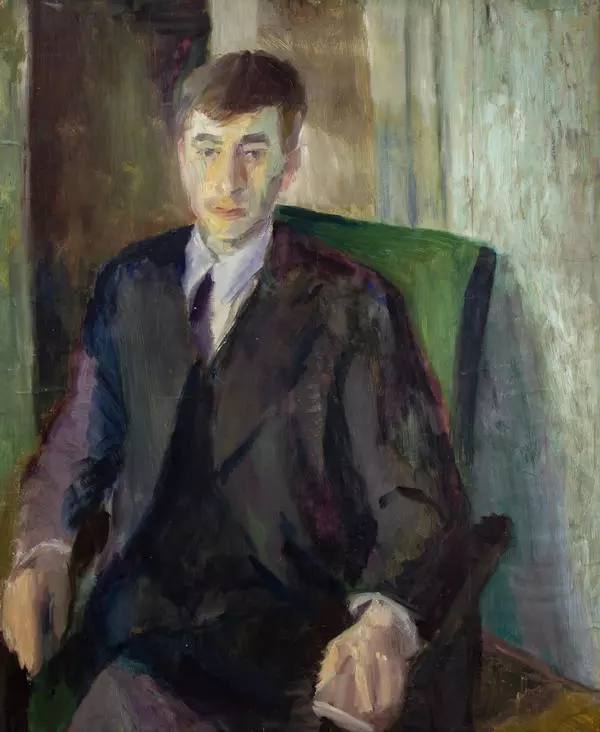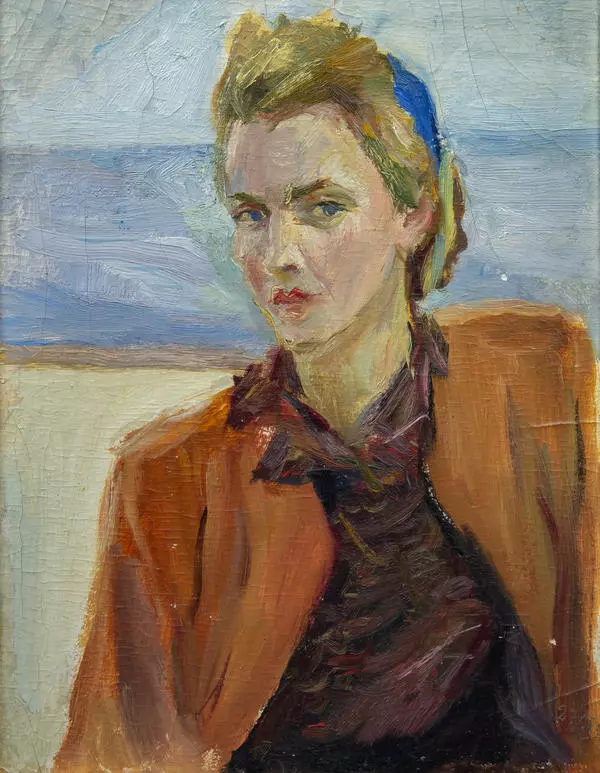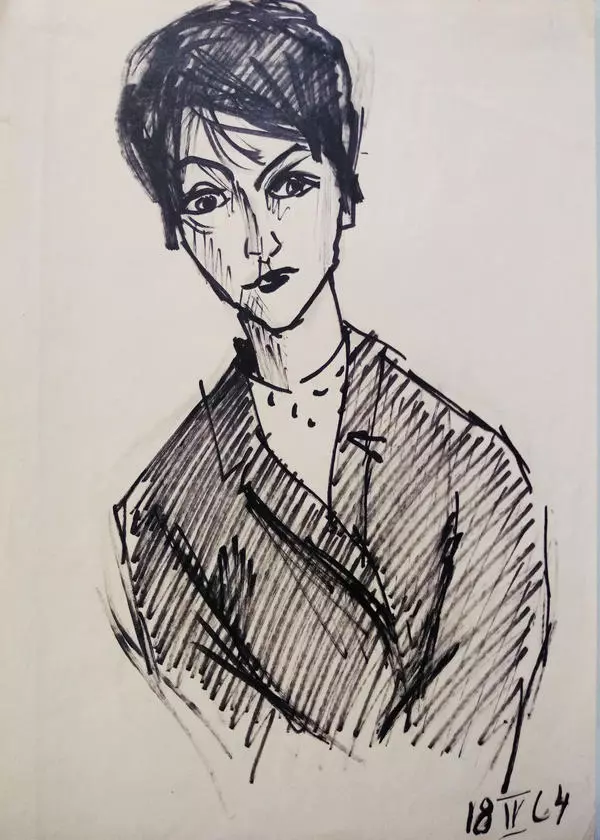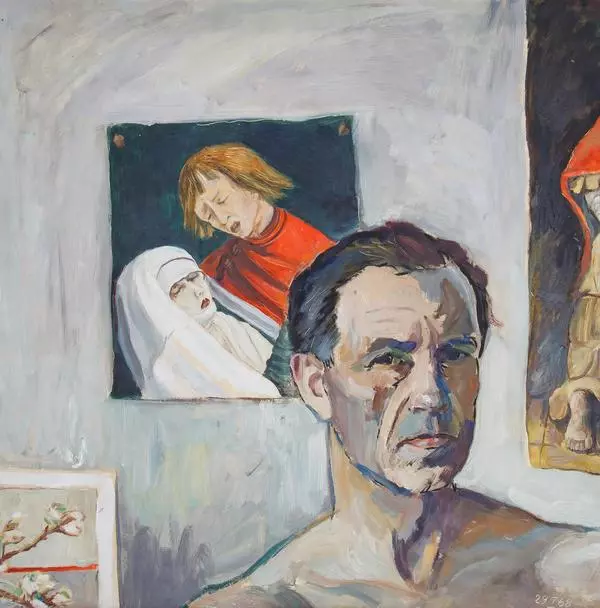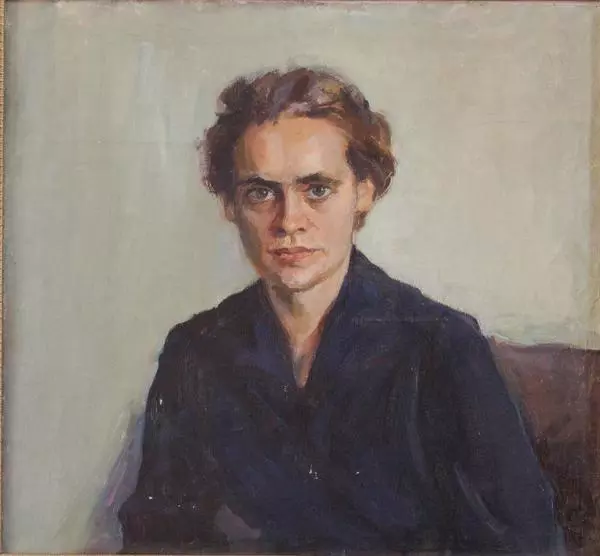Jurgis Preiss created this self-portrait in 1935. The drawing belongs to the early period of the artist’s work: in the 1930s he and his wife traveled across Europe and performed various tasks for the military intelligence of the USSR, while the artistic practice served as a cover for his underground political activities. At that time the genre of self-portrait took an important place in his work: it allowed the artist to address the intimate world of his feelings
In the 1930s Preiss completed many similar self-portraits. Most often they were small in size works, where the artist portrayed himself shoulders-deep, half-turn or, less often, the full-face - as in this self-portrait. The drawing is made from nature in one session, it is distinguished by a free and generalized, yet realistic manner, characteristic for many early paintings by the artist. The work was handed over to the museum’s collection by the artist’s adopted daughter Lyudmila Biryukova. It is considered to be the earliest surviving self-portrait in Preiss' collection of works.

